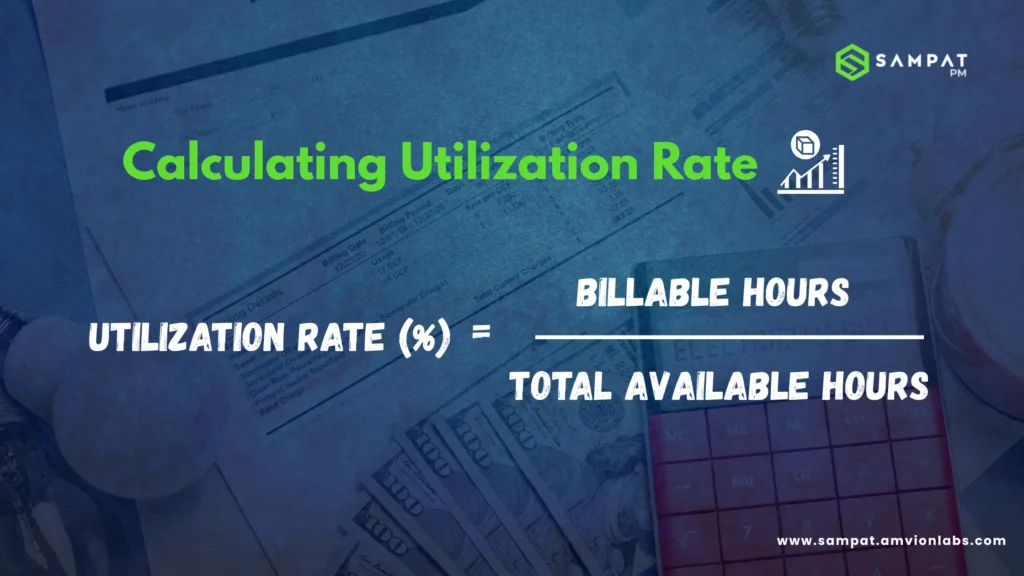
How to Calculate Employee Utilization and improve utilization rate
In today’s performance-driven work culture, simply keeping employees busy is no longer enough. To ensure productivity and business growth, companies must focus on how effectively their workforce is being used. That’s where the employee utilization rate becomes a key performance metric.
But what exactly is utilization rate? Why does it matter? And how do you calculate and improve it across your teams?
In this blog, we’ll break down how to calculate employee utilization rate — from its formula and benchmarks to actionable strategies for optimization.
What is Employee Utilization Rate?
Employee utilization rate is a measure of how much of an employee’s available work time is spent on productive, billable, or high-value tasks versus administrative or non-billable activities.
In simpler terms, it tells you how efficiently an employee’s time is being used toward generating output or revenue.
Why It Matters:
- Helps identify underused talent
- Highlights overburdened teams
- Improves project forecasting and profitability
- Enhances overall workforce productivity
- Supports better workload distribution
Whether you’re managing in-house teams or remote employees, tracking utilization ensures that your workforce is aligned with business goals.
How to Calculate Employee Utilization Rate
There’s a straightforward formula for calculating utilization rate:
Utilization Rate(%) = (Billable Hours / Total Available Hours) × 100
Let’s break it down:
- Billable hours indicate the time an employee invests in client-focused or output-driven activities.
- Available hours represent the full number of hours an employee is expected to work within a defined timeframe, such as 40 hours per week.

Example:
Suppose an employee worked 40 hours in a week, and 30 of those hours were spent on billable tasks. The utilization rate would be:
(30 ÷ 40) × 100 = 75%
This means 75% of their work time went into value-generating tasks, while the remaining 25% was spent on meetings, breaks, admin tasks, or idle time.
What’s a Good Utilization Rate?
An optimal utilization rate can differ based on the sector and the responsibilities tied to a particular role. However, here are some general benchmarks:
Role | Ideal Utilization Rate |
Billable consultants/agencies | 80–90% |
Internal team members (e.g. IT, HR) | 60–70% |
Creative/design teams | 70–80% |
Project managers | 60–75% |
Important: A 100% utilization rate is not ideal — it often indicates overworking, burnout risk, and lack of buffer time.
Types of Utilization Rates
Understanding different types of utilization helps refine your strategy:
- Billable Utilization: Time spent on client projects (most relevant for agencies, consultants, freelancers).
- Productive Utilization: Includes non-billable but valuable work (e.g., internal innovation, documentation).
- Total Utilization: All time spent working, regardless of billability.
By segmenting utilization, businesses can understand both revenue generation and internal value creation.
Common Mistakes When Measuring Utilization Rate
While the formula is simple, many businesses run into issues like
- Tracking inaccurate hours (manual logging leads to errors)
- Ignoring non-billable productive work like team training or research
- Assuming high utilization equals high performance
- Overlooking context (e.g., low utilization might be due to onboarding or project downtime)
That’s why having a smart tracking system and context-aware analysis is crucial.
How to Improve Utilization Rate
Improving utilization rate isn’t just about increasing workload — it’s about aligning tasks with skills, improving project planning, and removing productivity blockers.
Here are 10 proven strategies to boost your team’s utilization rate:
1. Use Time Tracking Tools
Adopt automated tools like the SAMPAT Productivity Tool to accurately log hours spent on specific tasks. These tools eliminate guesswork and help you analyze utilization patterns over time.
2. Streamline Project Planning
Ensure tasks are well-defined, deadlines are clear, and scope is realistic. Poor planning often leads to idle time or misallocated resources.
3. Improve Task Allocation
Ensure task assignments reflect each employee’s capabilities and availability, as mismatched workloads can hinder productivity and morale.
4. Reduce Time Wasters
Cut down on unnecessary meetings, redundant admin work, and distractions. Tools like productivity trackers can show where most non-productive time is being spent.
5. Monitor Capacity in Real Time
Avoid overloading high performers and underutilizing others. A live dashboard helps managers see who’s overbooked or free to take on work.
6. Encourage Cross-Training
When employees have a broader skill set, they can jump into multiple projects, keeping their schedules full and their time better utilized.
7. Set Realistic Benchmarks
Don’t chase 100% utilization. Instead, aim for a balanced range that includes buffer time for creative thinking, learning, or breaks.
8. Enable Self-Reporting
Allow employees to review and adjust their own time logs. It builds accountability and gives insight into how they view their workload.
9. Align Utilization with KPIs
Make utilization a key part of performance reviews, but combine it with output quality to prevent burnout.
10. Act on Utilization Insights
Don’t just collect data — act on it. When an employee shows a persistently low utilization rate, it’s important to investigate the underlying reason.
Utilization Rate vs. Productivity: What’s the Difference?
While utilization rate measures how much time is used on productive work, productivity measures how much output is generated during that time.
- Utilization = Time spent
- Productivity = Output produced
Both are important. High utilization with low productivity could mean time is being wasted. Low utilization with high productivity might signal a highly efficient worker — or someone underused.
SAMPAT monitoring tools help you to track and improve utilization effectively. SAMPAT—Offers employee productivity tracking and asset & ticket management
Final Thoughts
Employee utilization rate is more than a metric — it’s a window into the operational health of your business.
By accurately measuring and thoughtfully improving how your employees spend their time, you can:
- Maximize team efficiency
- Prevent burnout
- Improve project delivery
- Enhance overall employee satisfaction
Remember, it’s not about squeezing every second out of your workforce. It’s about aligning their time with what matters most to your business and their professional growth.
Frequently Asked Questions
What is an example of utilization formula?
An example of a utilization formula is:
Utilization (%) = (Billable Hours ÷ Total Available Hours) × 100
For instance, if an employee worked 32 billable hours in a 40-hour week, their utilization rate would be (32 ÷ 40) × 100 = 80%.
How to calculate utilization of the employee?
To calculate an employee’s utilization, divide their billable or productive hours by the total hours they were available to work, then multiply by 100. This shows what percentage of their time was spent on productive tasks.
How to calculate FTE utilization?
To calculate Full-Time Equivalent (FTE) utilization, first determine the total billable hours worked by all employees. Then divide that by the total available working hours for the FTE count, and multiply by 100.
FTE Utilization (%) = (Total Billable Hours ÷ (FTE × Available Hours)) × 100
How to calculate utilization rate with PTO?
When calculating utilization with Paid Time Off (PTO), subtract PTO hours from the total available hours before applying the utilization formula:
Utilization (%) = (Billable Hours ÷ (Total Available Hours – PTO Hours)) × 100
How to track employee utilization?
You can track utilization using employee productivity monitoring tools like SAMPAT, which automatically records active working hours, tracks projects, and generates utilization reports. Manual methods like spreadsheets or timesheets can work too, but software provides more accurate and real-time data.



